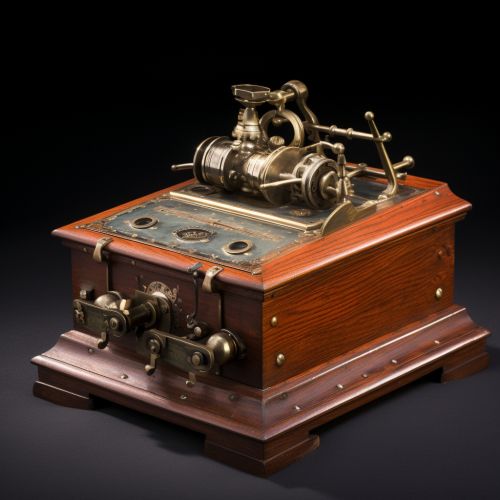Telegraphy
History
Telegraphy, from the Greek words tele, meaning "far off", and graphein, meaning "to write", is a method of transmitting textual information over long distances. The history of telegraphy dates back to the ancient times, when smoke signals and drum beats were used for communication. However, the modern form of telegraphy, which uses electrical signals, was developed in the 19th century read more.
In 1837, Samuel Morse, along with Alfred Vail, developed the Morse code read more, a system of representing letters and numbers through a series of dots and dashes. This was a significant development in the field of telegraphy, as it allowed for the transmission of complex messages over long distances. The first telegraph line was established between Washington, D.C. and Baltimore in 1844.


Types of Telegraphy
There are several types of telegraphy, including optical telegraphy, electrical telegraphy, and wireless telegraphy.
Optical Telegraphy
Optical telegraphy involves the use of visual signals, such as lights or flags, to transmit information. This form of telegraphy was used extensively in the ancient and medieval times. The semaphore system, developed in the 18th century, is a notable example of optical telegraphy read more.
Electrical Telegraphy
Electrical telegraphy uses electrical signals to transmit information. The Morse system, which uses a series of electrical pulses to represent letters and numbers, is a form of electrical telegraphy. Other forms include the Cooke and Wheatstone telegraph and the Hughes telegraph read more.
Wireless Telegraphy
Wireless telegraphy, also known as radiotelegraphy, uses radio waves to transmit information. This form of telegraphy was developed in the late 19th and early 20th centuries, with notable contributions from inventors such as Guglielmo Marconi read more.
Impact on Society
The development of telegraphy had a profound impact on society. It revolutionized communication, making it possible to transmit information quickly over long distances. This had significant implications for various sectors, including commerce, journalism, and warfare.
In the realm of commerce, telegraphy facilitated the rapid exchange of information, enabling businesses to operate more efficiently. It also played a crucial role in the development of the stock market, as it allowed for real-time updates on stock prices read more.
In journalism, telegraphy enabled the swift dissemination of news, transforming the nature of news reporting. It also led to the creation of news agencies, such as the Associated Press, which relied on telegraphy to gather and distribute news read more.
In warfare, telegraphy provided a means of coordinating military operations over long distances. It was used extensively during the American Civil War and the two World Wars read more.
Modern Usage and Legacy
While telegraphy has largely been replaced by more modern forms of communication, such as telephony and the internet, it has left a lasting legacy. The principles of telegraphy are still used in certain areas, such as in the transmission of data over computer networks read more.
Moreover, the impact of telegraphy on society continues to be felt. It laid the groundwork for the development of modern communication technologies and played a crucial role in shaping the world as we know it today.
